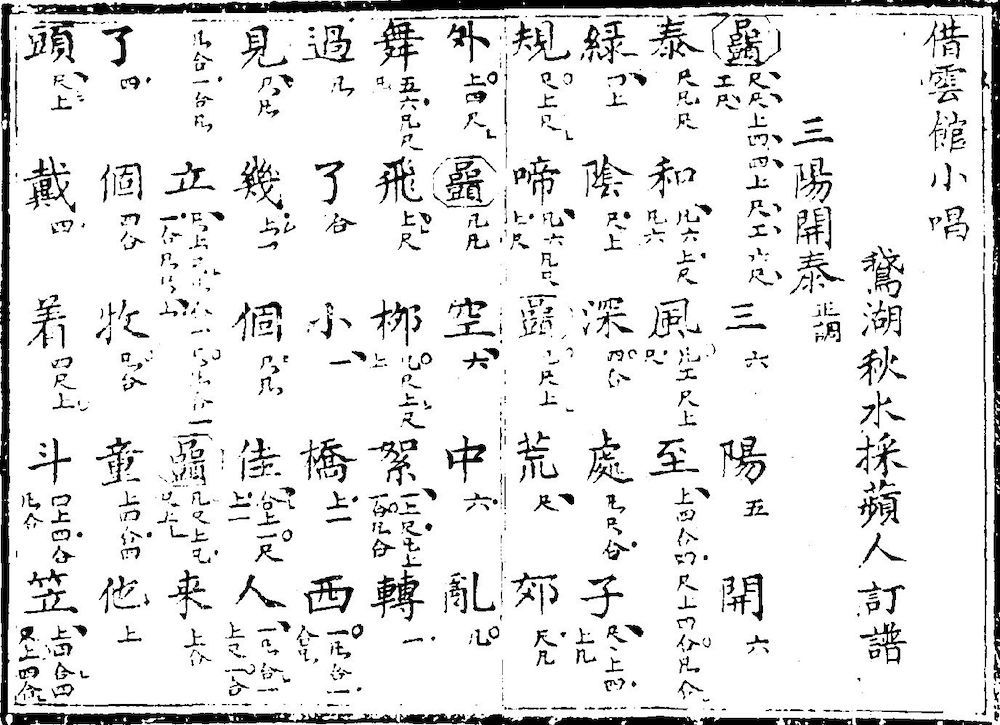Jieyunguan xiaochang 借雲館小唱 "Vocal tunes from the Leaning-on-Clouds Studio", also called Jieyunguan qupu 借雲館曲譜, is a collection of scores for "lesser tunes" (xiaoqu 小曲) compiled by Hua Wenbin 華文彬 (1784—1859) during the late Qing period 清 (1644-1911). Hua Wenbin is also known as the publisher of a collection of tunes for the lute, the Pipapu 琵琶譜. Both collections were published in 1818.
The Xiaochang collection includes ten tunes from the Ming 明 (1368-1644) and Qing periods. These are Sanyang kaitai 三陽開泰, Ruanping diao 軟平調, Wuban mei 五瓣梅, Ti Mudanting hou 題牡丹亭后, Qinqu 琴曲, Shenqiong 番腔, Yong fenghua xueyue 詠風花雪月, Qingping diao 清平調, Jing jianding hua 京翦靛花, and Matou diao 馬頭調.
In contrast to the famous airs of theatre plays, popular ballads circulating among the ordinary folks were called "lesser songs" (xiaochang 小唱), "lesser tunes" (xiaoqu), "miscellaneous tunes" (zaqu 雜曲) or "fashionable tunes" (shiqu 時曲). These songs were performed in marketplaces and the villages. They were commonly accompanied by music instruments, like the pear-shaped lute (pipa 琵琶), the three-stringed lute (sanxian 三弦), the "moon guitar" (yueqin 月琴), and clappers (paiban 拍板). The lesser tunes became very popular from the early seventeenth century on and soon attracted the attention also of the elite, whose members began collecting and publishing these popular songs. Although many songs are known for their lyrics, Hua Wenbin's collection is the only one that also includes the melodies of the "lesser tunes".
 |
Tablature of the tune Sanyang kaitai 三陽開泰, played in the key zhengdiao 正調. It can be seen that the piece is performed with pre- and interludes. |
The longer pieces Sanyang kaitai, Wuban mei and Matou diao are partially suites of several songs. Wuban mei, for example, consists of the songs Manjiang hong 滿江紅, Yinniu si 銀紐絲, Hongxiu xie 紅繡鞋, Yangzhou ge 揚州歌 and Matou diao 馬頭調 (a different song than the tune with the same name). The tune Matou diao is a long piece describing the thoughts of a wife of her husband who is on a business trip far away. Several of the lesser tunes were adapted by theatre plays, like Qinqu, a song that was used in the play Yuzuanji 玉簪記 (with the title Qintiao 琴挑), or Fanqiong 番腔, which served the play Muyangji 牧羊記 (with the title Wangxiang 望鄉).
At the end of Hua Wenbin's collection, three additional chapters are included, explaining the rhyme structure of the songs, questions of harmony, and performing skills.